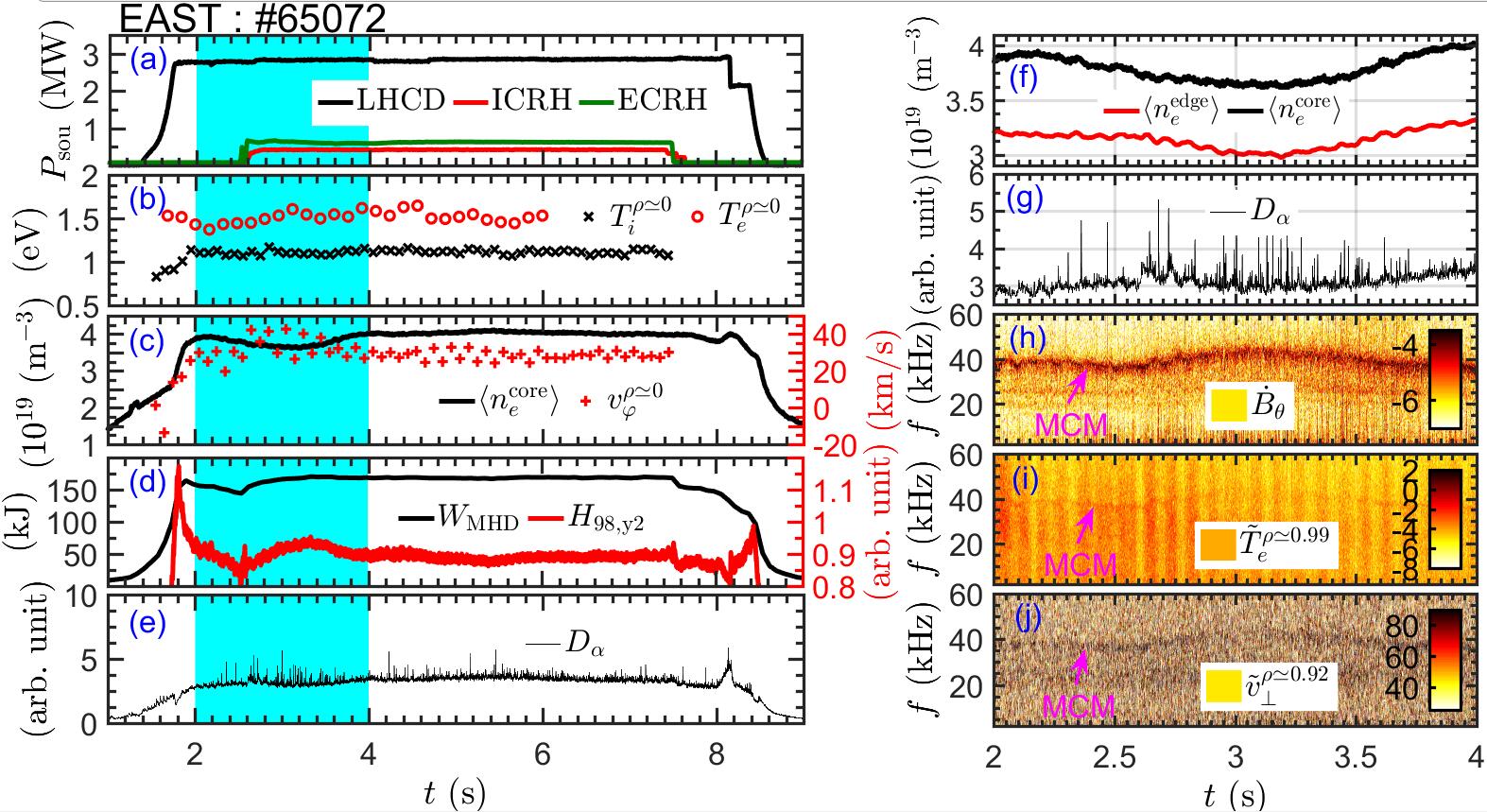
Recently, scientists with EAST team made an experimental analysis on the low-n magnetic coherent mode (MCM) and the new result they obtained may prolong fusion reactor components' life.
In the high-confinement mode (H-mode) plasmas, a narrow outer region is characterized by a spontaneously generated steep pressure gradient and a large self-driven plasma current, referred to as the 'pedestal'. The large pressure gradient and plasma current in the pedestal can provide free energies for a variety of instabilities, and thereby cause either the coupled peeling-ballooning modes, i.e. edge-localized modes (ELMs) or kinds of coherent or quasi-coherent modes.
Crash of large ELMs, which produces intolerable divertor heat and particle loads, has been foreseen to result in a critical lifetime problem of plasma-facing components (PFCs) in the next-generation fusion devices, such as the international tokamak experimental reactor (ITER).
Therefore, pedestal coherent or quasi-coherent modes have attracted a lot of interest in the fusion research community due to their considerable contribution to regulating pedestal structure.
In the study this time, scientists investigated radial distribution and poloidal propagation of the MCM.
And then they evaluated in detail the temporal evolution of MCM amplitude during large ELM crashes, which suggested that the mode was closely correlated with pedestal buildup.
In addition to the results mentioned above, dedicated experiments revealed the possible correlations of MCM's frequencies with edge line-averaged density and edge safety factor.
And the team also explored the effect of the MCM on edge particle transport. Corresponding results suggested that the MCM was likely to primarily result in a notable poloidal redistribution of the divertor particle flux, rather than a considerable net increase of the total flux.
This new exploration on high constraint mode base magnetic coherent mode may provide valuable reference for the extension of fusion reactor PFCs' lifetime.

In a typical EAST high-constraint mode discharge, MCM is found in the magnetic fluctuations signal and the electrostatic fluctuations signal in the pedestal region. (Image by CHEN Ran)

86-10-68597521 (day)
86-10-68597289 (night)

86-10-68511095 (day)
86-10-68512458 (night)

cas_en@cas.cn

52 Sanlihe Rd., Xicheng District,
Beijing, China (100864)

